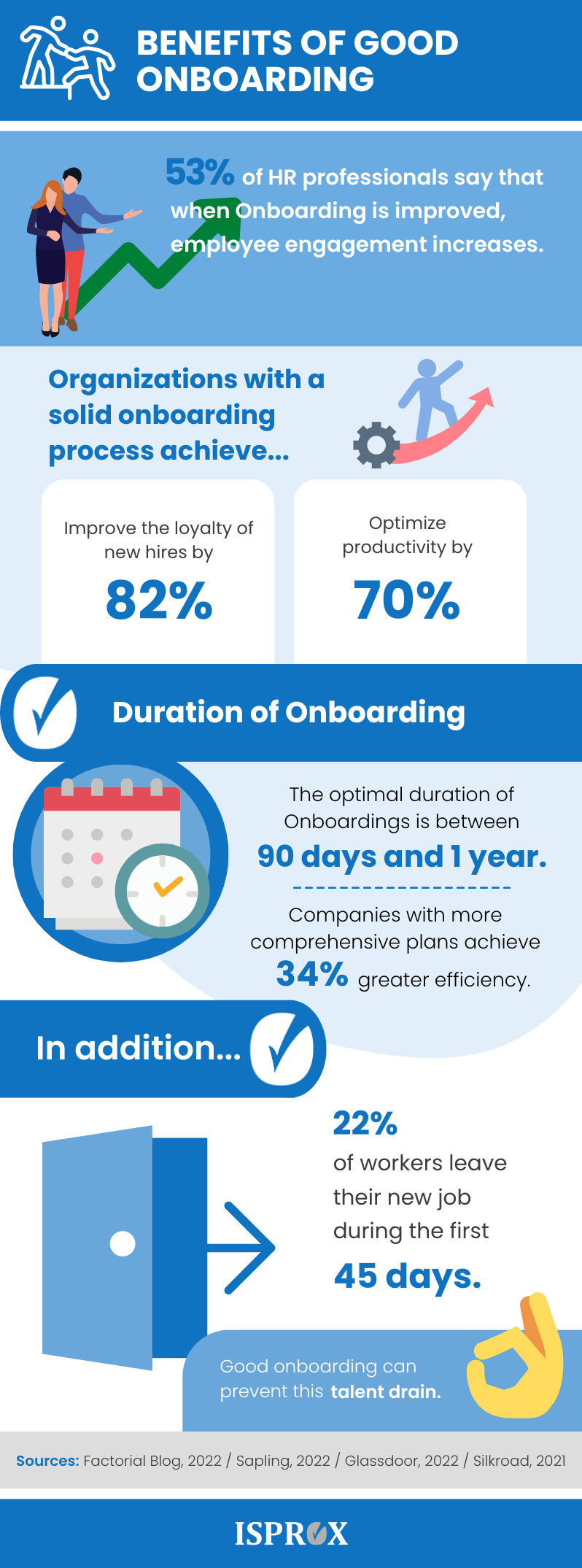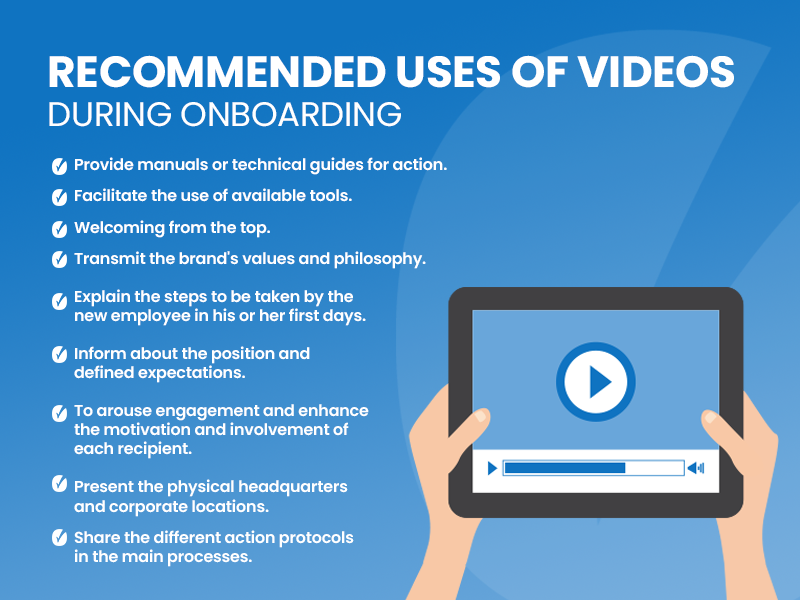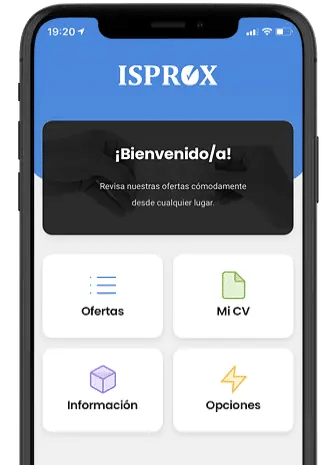What is digital onboarding and what is it for? When new professionals join an organization, they must be integrated as soon as possible. This is the only way to accelerate the productivity and performance of each newcomer. It is in everyone’s interest to make the most of human resources and talent in the shortest possible time. This is especially true for company managers.
In this article we explain how to get newcomers to bring value to the group. There is no time to lose to achieve success.

Defining digital onboarding
According to the labor force survey, in 2021, the employment rate rose from 71.7% in 2020 to 73.1% in 2021, an increase of 1.4%. This job creation means that many first-time employees are joining companies. How can we speed up their integration so that they can adapt to their responsibilities, colleagues and functions as soon as possible?
Onboarding is precisely the process of adaptation, integration and incorporation of a professional to their new job. The organization must promote different actions to make them feel an active part from the very first moment. If the newcomer does not feel included early on, it will be difficult for him to perform. Until he adapts to the environment, he feels limited, and he is.
On the other hand, the company needs to accelerate this process. It is interested in rapid adaptation. At the same time, it needs to optimize its resources and not spend more time than it should on this process.
What is the solution? Develop an onboarding plan based on digitization . It is the perfect option to combine the desired efficiency for the employee and the economic performance of the organization.
In human relationships, first impressions are decisive. Did you know that it only takes 30 seconds to form an opinion about someone and make a judgment about them? The same is true for teams and workplaces. It is important to act quickly to ensure that the initial assessment is positive.
Are you looking for talent to expand your team?
At ISPROX we help you find the right profile, saving you time and increasing your hiring success rate.
What are the objectives of onboarding?
Check out these facts. According to a Glassdoor report, having an onboarding process improves new employee loyalty by 80% and productivity by more than 70%!
However, almost 60% of organizations focus their onboarding on paperwork and processes. This is reflected in research by the Human Capital Institute. Be very careful: 22% of new hires leave their position during the first month and a half of activity.
Physical onboarding is no longer enough. The digitization of these processes has become the main, and only, possible option. Shall we advance in your knowledge?
The integration of the new employee must begin as soon as he/she accepts our job offer. From that moment on, he/she is potentially our new professional.
Thereafter, we must pursue several clear objectives:
- To guarantee the candidate’s definitive incorporation to the company.
- Generate a motivating and memorable experience in that initial transition to their new job.
- Communicate the organization’s internal policies.
- To share the company’s philosophy and values.
- Provide information related to job functions.
- Form a networking network that favors its rapid integration and operability.
- Speed up your learning curve. This will enable you to perform with maximum efficiency.
An important differentiation
Before continuing, we believe it is crucial to point out a key classification: Do you know the difference between these three concepts?
- Onboarding This is the process of welcoming new members to the company.
- Inboarding. It focuses on existing employees, to push them towards internal promotion.
- Offboarding. In this case, it targets former employees, just after they have been laid off.
Why create a professional welcome plan?
In reality, welcoming a new employee does not end on the first day, far from it It is a process that must be followed for several weeks and must be monitored. The leadership style of their superiors makes a difference, but it is not enough.
Why should you invest resources in it? Fundamentally, because it provides the entity with significant benefits:
- Retaining talent. The business difference is in people. If we have the best people, we will be better. To achieve this, it is not enough to recruit them, we must keep them.
- Improve productivity. Up to 54% has been set to increase in new professionals with a good induction plan.
- Enhance brand image. Corporate perception improves. And not only employer branding does so, because this concept has a strong influence on the external image projected.
- Reduce costs. Yes, it also saves money. The costs of recruiting and selecting personnel are lower, because those who arrive stay. Don’t forget, either, all the time invested in training each candidate who then leaves.
Why go digital in onboarding?
Establishing an online platform to better welcome new professionals only brings advantages, especially the following:
- Save time on administrative tasks. Everything is streamlined, optimized and accelerated, so the company and the employee can focus on productive tasks sooner.
- Reduce the margin of error. Beware of misunderstandings and over-understandings. With digitalization, machines are aware of everything and avoid them.
- Adapt to the newcomer. The person involved can regulate his or her own onboarding process. When we work with freelancers or external professionals, things are also simplified.
- Improve content updates. Automation allows you to have them always available, as well as the latest data. Therefore, you can consult them in real time.
- Optimize the follow-up of each case. Everything is easier to know how the newcomer is performing. te. Faults are identified earlier and corrected better.
- Easy sharing of information. Control of the situation increases. We can always share data, documents or indicators.
- Boosting the professional’s access to content. The newcomer has the possibility of consulting any information from his personal devices. Wherever they are.
6 useful resources for digitizing onboarding
Make no mistake: the use of digital technology helps to speed up and automate the onboarding of new workers. Here are half a dozen valuable ideas to boost this process.
1. Checklists
The lack of knowledge and uncertainty about what is new block new employees. To guide them easily through the optimal path, it is highly recommended to create a list of tasks and activities to be performed during their first days. Thus, when this list is shared online, the professional and his supervisor know at all times how he is performing.
On the other hand, it brings security, judgment and confidence, because the protagonist has the feeling of being on the right path. And, in fact, this is the case.
Finally, remember that it is possible to use online applications to generate them. For example, Trello makes it very easy to visualize tasks through “cards” that can be easily moved through different columns (it is usually organized with a column for pending tasks, another for tasks in progress and another for completed tasks) and create checklists within each of these cards.

2. Tools, apps and integrated tools
There are specific onboarding programs and tools that simplify and streamline all procedures. Thus, Talmundo is a platform that brings confidence and improves brand perception.
In addition, many integrated systems make it possible to manage several fronts together. Human Resources has it much easier, we save time and money and employee follow-up is more complete and immediate.
3. Electronic signature
Considering that telematic communications are becoming more and more frequent and varied, the digital signature is very necessary. It allows the agreements reached to be validated remotely, without the need for physical contact. Signaturit is a great option in this regard.
4. Learning management systems
Handing out unattractive printed documentation does not arouse the newcomer’s interest or motivation to learn. Tutoring and mentoring reinforce the human factor, but their cost is excessive. Having technological learning systems to train newcomers is a great alternative, and even more so if they integrate motivating gamification systems. They can be created ad hoc or take advantage of existing platforms, such as Cornestone.
5. Chatbots
In the same direction as the previous section, artificial intelligence is an excellent resource. Chatbots are very useful, above all, to solve specific doubts. The virtual assistant provides an agile, precise and economical consultation service, in terms of time and money. They become an immediate, discreet and available 24/7 support for each new recruit.
6. Audiovisuals
Making video tutorials, webinars or videoconferencing platforms available to newcomers is very useful when you want to improve remote communications. In addition, they are a very valid resource to provide practical information and raise brand awareness.

Ideas for a concrete onboarding plan
The onboarding plan cannot be a theoretical document of complicated execution. We must be very practical in determining it, and specify very well how to implement it. Whether the professional is onboarded face-to-face or remotely, a digital onboarding approach is the best choice.
The 4 essential steps
When it comes to optimized hosting, there are four fundamental steps:
- Delivery of the welcome kit. You can give it to them by hand or send it to their home address, in which case it is advisable to ask for a photograph of its reception. This is the pack containing all the material and initial information.
- Inclusion in digital communication channels. As soon as you are part of the team, you must have all the accesses at your fingertips. In addition to email and WhatsApp, other more professional systems can be used, such as Slack or Telegram. In addition to addresses and contact numbers, you should also provide them with access codes and passwords.
- Introductory meeting. Preferably face-to-face; if not possible, telematic. It is essential to give that human interaction to your welcome. It is also the best way to transmit the main information and to generate a strong corporate footprint. It is essential to address aspects such as corporate culture and philosophy at this meeting. In addition, we will discuss the organizational chart, the signing of the contract and the assigned tasks and responsibilities. In general, it is important to make the conversation practical, with real examples and references to help understanding.
- Promoting well-being. It is crucial to make the new employee feel at ease in the company as soon as possible. To this end, the company must be aware of the issue and inform each newcomer. Aspects such as healthy habits and physical activity are crucial. It is also necessary to encourage interrelationships between colleagues and to have a welcoming and stimulating workplace.
A decisive step forward
Top leaders and HR professionals are increasingly aware of the importance of welcoming new employees well. Looking at data from the Sprout Social survey 53% agree that employee engagement improves when onboarding is done right. What’s more, employees also find onboarding essential at the start of a new career. According to North Pass they are twice as likely to consider a job change if they have a negative onboarding experience.
Undoubtedly, organizations are beginning to be aware of the importance of this phase. However, they have not yet fully developed its possibilities There is still a certain reluctance on their part to make a decisive commitment to its implementation. Especially when it comes to providing information and access to those who have not yet made their debut in the team.
However, the facts indicate that it is vital to start as soon as possible. As soon as the work commitment has been agreed upon, this new candidate already belongs to the company. And he or she must be treated as such.
The digital onboarding resources and ideas that we have presented are decisive, today, for companies and their employees. Once this approach is accepted and implemented, the benefits for all are considerable.










